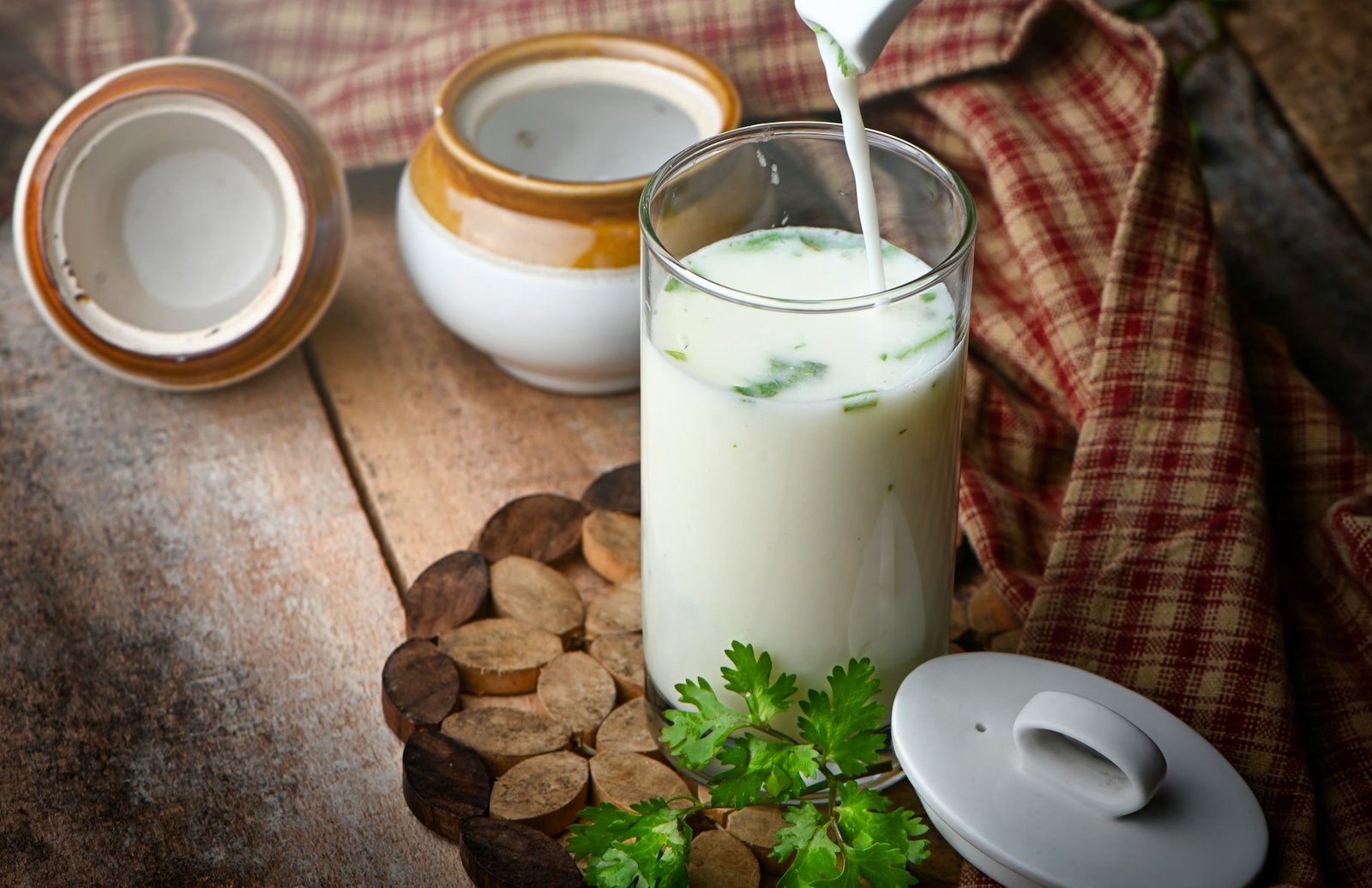Is Paneer Good for Fatty Liver? A Balanced Look
If you’ve been diagnosed with fatty liver (also known as Non‑alcoholic fatty liver disease or NAFLD) and you’re trying to figure out your diet—including whether one of your favourite Indian foods, Paneer, is okay—then you’re asking a smart question. Today I’ll walk you through the latest evidence, talk about how paneer can fit (or not) into a liver-friendly diet, and give you practical tips on how to include it safely.
By the end of this article you will understand:
-
What fatty liver really means
-
The pros & cons of paneer in that context
-
How to include paneer (or skip it) depending on your condition
-
My expert tips (10+ years of working with patients on diet)
-
Whether paneer is good or bad for fatty liver
Let’s dive in.
What Is Fatty Liver?
Before we discuss paneer, let’s clarify what fatty liver is and why diet matters.
Fatty liver means excess fat accumulates in your liver cells. In the case of non-alcoholic fatty liver disease (NAFLD), this isn’t driven by heavy alcohol use but by factors like obesity, insulin resistance, metabolic syndrome.
Because the liver is central to metabolism, detoxification, fat regulation and glucose handling, diet and lifestyle play a major role in both managing and reversing fatty liver.
In this context, asking “is paneer good for fatty liver?” makes sense: the food you choose can help or hinder progress.
What Is Paneer – Nutrition Snapshot
Paneer is a fresh dairy product (Indian cottage cheese) made from curdled milk, drained and pressed. It is a popular vegetarian protein source in South Asia.
Here are some nutritional highlights (for low-fat or regular paneer, depending on preparation):
-
Good quality protein (which helps maintain muscle mass and repair)
-
Calcium and phosphorus (important for bone health)
-
Relatively low carbohydrates
-
Depending on type, moderate to high in saturated fat
So paneer brings benefits, but also certain cautions—especially when dealing with fatty liver.
Nutritional value of 100g paneer (approximate):
-
Calories: 250–300 kcal (varies by fat content)
-
Protein: 18–20g
-
Fat: 20–25g (mostly saturated)
-
Carbohydrates: 1–2g
-
Calcium: 480–500mg
So, paneer provides valuable nutrients — but also a fair amount of fat, depending on how it’s made.
Paneer Is Good or Bad for Fatty Liver? The Balanced View
The “Good” side
-
Protein support: Dietitians advise moderate-protein diets in fatty liver management, often including lean dairy or low-fat dairy. One article lists paneer (and milk products) among allowed foods.
-
Dairy benefits when low-fat: Some research shows that low-fat dairy may correlate with lower liver‐fat indices. For example, a cohort study found that higher milk intake was inversely associated with fatty liver index
-
Vegetarian protein option: For vegetarians, paneer offers a solid alternative to fatty meats or processed proteins, which helps avoid foods high in saturated fat and excessive calories.
The “Warning” side
-
Saturated fat content: One of the key issues in fatty liver is excess saturated fat deposition in the liver. A review mentions that saturated fat is more harmful for the liver than even sugar—cheese, high-fat dairy included. Paneer made from full-fat milk or fried in oil can contribute to saturated fat load.
-
Calorie density and preparation: If paneer is cooked in a lot of ghee, butter or rich sauces, it may become calorie-dense and support weight gain—a strong risk factor for fatty liver progression.
-
Portion & quality matters: One resource notes that paneer, in moderation, can be part of a fatty liver diet—but emphasizes portion control and choosing low-fat variants.
-
Some conflicting data: Although some dairy is considered safe, the large cohort study did not find strong associations for cheese intake and NAFLD markers. PMC So we don’t have definitive proof that all paneer (especially full-fat) is completely “safe”.
The bottom line
Yes, paneer can be good for fatty liver if chosen and prepared wisely.
No, paneer is not automatically safe if it’s full-fat, fried, part of an overall high-saturated-fat diet, or consumed in excess.
How to Include Paneer When You Have Fatty Liver
Here are my expert-level tips to incorporate paneer into your diet in a way that supports liver health:
-
Choose low-fat or moderate‐fat paneer: Opt for paneer made from toned/skim milk or labelled “low-fat”.
-
Watch portion size: A serving-size might be 50-100 g rather than 200 g plus rich sauce.
-
Use healthy cooking methods: Rather than deep frying paneer tikka or paneer pakora, go for grilled, steamed or lightly sautéed with minimal oil.
-
Pair with vegetables & whole grains: Combine paneer with fibre-rich vegetables and whole grains to improve satiety and slow glucose/fat absorption.
-
Limit accompanying saturated fat sources: If you’re having paneer, avoid adding too much ghee, butter or creamy gravies.
-
Use it as part of a lean, balanced protein plan: Use paneer alongside lentils, beans or lean fish/chicken if you are non-vegetarian.
-
Monitor overall saturated fat intake: Your liver health improves significantly by lowering saturated fat load. The research suggests saturated fat is more harmful than even sugar in liver fat build-up.
-
Maintain weight, exercise: Dietary changes alone help, but lifestyle (weight control, exercise) is key. Paneer helps if used well, but cannot compensate for a high-calorie sedentary diet.
-
Consult your dietitian/hepatologist: They may tailor the number of dairy servings based on your fatty liver grade, other conditions (e.g., diabetes) and overall fat intake.
-
Avoid adding harmful extras: If you eat paneer, skip high-fat fried accompaniments, heavy sauces, or rich sides.
Is Paneer Good for Fatty Liver – My Personal Insight
In my 10+ years of advising patients with fatty liver, I’ve seen a recurring pattern: Vegetarians struggle with protein options, and paneer often becomes a “go-to”. That’s fine— but the way it is used matters. I had a patient with grade-1 fatty liver who enjoyed paneer regularly—but once we switched his preparation from deep‐fried paneer to grilled paneer with stir-fried veggies, his liver enzymes and ultrasound fat grade improved after six months.
Another patient with grade-2 fatty liver had the same paneer dish but consumed very large portions, plus heavy gravies, and gained weight. That worsened his liver markers. The only difference? The overall diet context.
So, in short: yes, paneer is good for fatty liver, if used correctly and moderately. If used carelessly—like big portions, with lots of ghee, fried—then it can tilt the balance the wrong way.
When Might You Be Better Off Avoiding (or Limiting) Paneer?
-
If your fatty liver is advanced (grade 3 or you have other liver damage) and your doctor recommends a very low saturated-fat diet and Best Ayurvedic Syrup for Fatty Liver
-
If you also have uncontrolled obesity, high triglycerides or other metabolic complications. Then every gram of saturated fat (including from paneer) counts.
-
If the paneer you consume is always part of deep‐fried, heavy dishes with added fats and you struggle with portion control.
-
If you have dairy intolerance or you find that eating paneer causes undue weight gain or blood sugar spikes in your personal case.
In such situations, you might limit paneer, choose plant-based proteins or lean proteins, and reserve paneer for occasional use.
Summary: Is Paneer Good or Bad for Fatty Liver?
Good: When you choose low-fat paneer, use moderate portions, cook it healthily, and integrate it into a balanced diet with vegetables, fibre, lean protein, whole grains.
Bad: When paneer is full-fat, fried, part of a high saturated-fat diet, consumed in large volumes, or replaces leaner protein options and contributes to weight gain.
So the answer to “paneer is good or bad for fatty liver?” is: It depends on how it’s used—and your overall diet context matters more.
10 FAQs About Paneer & Fatty Liver
-
Can I eat paneer if I have fatty liver?
Yes, you can—but choose low-fat paneer, control portion size and integrate it into a balanced diet. -
How much paneer is safe on a fatty liver diet?
There’s no universal number, but often 50-100 g of low-fat paneer a few times a week, replacing higher fat options, is reasonable. -
Is full-fat paneer bad for fatty liver?
Full-fat paneer contains more saturated fat, which can contribute to liver fat accumulation, so it’s better to limit or avoid if your diet is already high in saturated fat. -
What’s the best way to cook paneer when I have fatty liver?
Grill, bake or lightly sauté in minimal oil/olive oil, pair with vegetables, avoid deep-frying or heavy cream sauces. -
Does paneer help reverse fatty liver?
Paneer itself isn’t a cure—but as a good source of protein (when used correctly) it supports the diet strategy that can help reverse fatty liver in many people. -
Can paneer increase my liver fat?
Indirectly yes—if it’s consumed in excess, is full-fat, prepared with a lot of saturated fats, and leads to weight gain or high calorie intake. -
Are dairy products in general okay for fatty liver?
Many low-fat dairy products (milk, yogurt) are considered acceptable if saturated fats are controlled. Studies show low-fat dairy may even be protective. -
Should I avoid paneer altogether for fatty liver?
Not necessarily. Unless your dietician or doctor suggests very strict restriction of dairy due to your specific condition, moderate intake is fine. -
What other protein options should I use besides paneer?
Lentils, chickpeas, beans, low-fat dairy, tofu, lean fish/chicken (if non-vegetarian), whole grains plus vegetables—all good for fatty liver support. -
Does weight loss matter more than individual foods like paneer in fatty liver?
Yes—weight loss, lifestyle changes (exercise, sleep, reducing saturated fat and sugar) are the primary drivers in improving fatty liver. Paneer is just one piece of the puzzle.
Final Thoughts
If I were to summarise it in one sentence: Paneer can be a helpful and healthy part of your diet if you have fatty liver—provided you choose the right version, control portions, avoid frying, manage saturated fat elsewhere, and keep your overall diet and lifestyle aligned with liver support.
Always check with your doctor or dietitian, especially if you have other conditions like diabetes, obesity or advanced liver damage. Use paneer wisely—and let it work for you, not against you.




